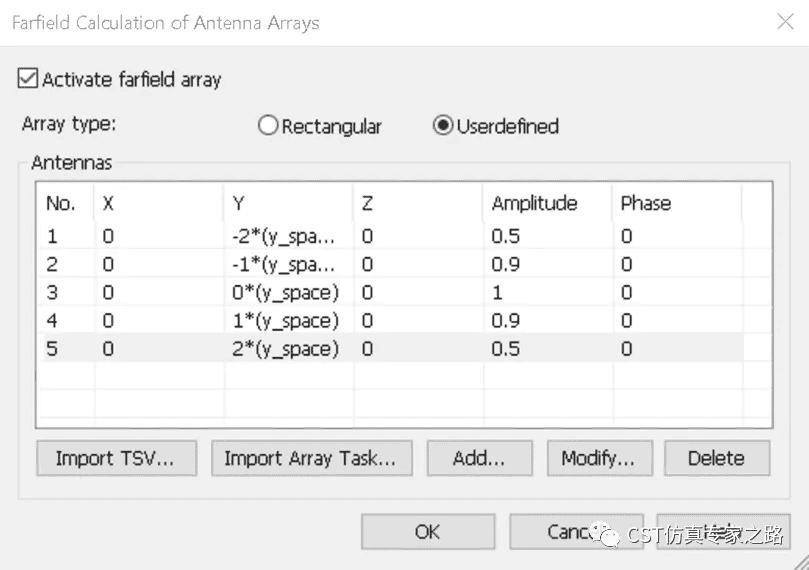本期我們將介紹陣列天線模擬。陣列天線可以獲得窄波束、高增益和精確的方向性,因此可以全面提升雷達的偵測性能。

本例模擬物件為一個毫米波雷達的TX天線,其y方向上由5個相同結構的串聯貼片陣子組成。

從上圖的比較可以看出,採用陣列結構(右圖)以後,天線的增益比單陣子(左圖)提升了7dB,y方向的波束變得更加集中,指向更加精確。
對於完整陣列的模擬需要更多的運算資源和時間,在陣子設計之後,為了快速評估天線陣列的性能,這裡我們介紹一種快速的波束合成的方法。具體方法如下:
1. 對單天線進行模擬後,得到遠場結果。

2.選取遠場結果, 點選Array factor圖標,對Array type進行設置,這裡我們在y方向定義5個elements,間距設定一個參數y_space,方便後續的參數修改。點選update list更新下方表格。

3.根據實際陣列設計,點選自訂修改每個連接埠的Amplitude,從上到下分別為0.5、0.9、1、0.9、0.5。

點選ok後,即可以得到波束合成後的結果。
4 、比較單陣子combine和5個陣子同時激勵的結果,可以看到兩個結果一致性非常好。

比較2D遠場方向圖的不同切面,兩種方法所得結果幾乎相同。


原文轉載來自: 周明 – CST毫米波雷达仿真解决方案介绍(三)
系列文章:
CST 毫米波雷達模擬(一)
CST毫米波雷達模擬(二)
CST毫米波雷達模擬解決方案介紹(三)
CST毫米波雷達模擬解決方案介紹(四)
CST毫米波雷達模擬解決方案介紹(五)
看更多其他文章:
CST電動車EMC模擬(十)——電動車母排(Busbar)電磁及熱模擬
CST毫米波雷達模擬(二)
在CST虛擬雙生上模擬靜電放電




